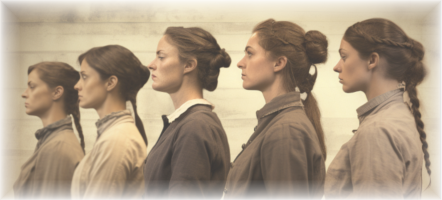Margaret Humphries was a 32-year-old woman who arrived in New South Wales in 1818 aboard the convict ship Maria. She had been sentenced to transportation for 14 years for stealing a handkerchief. Margaret had grown up in poverty and had turned to petty theft to survive.
During the journey to Australia, Margaret suffered from seasickness and was confined to the crowded and unsanitary hold of the ship with other female convicts. Many of the women on board suffered from illnesses such as dysentery and scurvy, and some did not survive the journey.
Upon arrival in Sydney, Margaret was sent to the Female Factory, a prison for female convicts. She was put to work as a domestic servant for a wealthy family, where she worked long hours for little pay. Despite the difficult conditions, Margaret remained determined to make a new life for herself in Australia.
Over time, Margaret’s behavior improved, and she was eventually granted a Ticket of Leave, which allowed her to work and live independently. She started working as a nurse and soon became known for her compassion and care for the sick and elderly.
In 1823, Margaret’s sentence was commuted, and she was given a full pardon. She used her newfound freedom to continue working as a nurse, and she became a well-respected member of the community. Margaret was known for her kindness and dedication to helping others, and she often visited sick and elderly people who could not afford medical care.
Margaret’s story is a testament to the resilience and determination of women who were transported to Australia as convicts. Despite facing significant challenges and discrimination, Margaret was able to rebuild her life and make a positive impact on the community. Her story is a reminder of the importance of compassion and caring for others, even in the most difficult circumstances.
